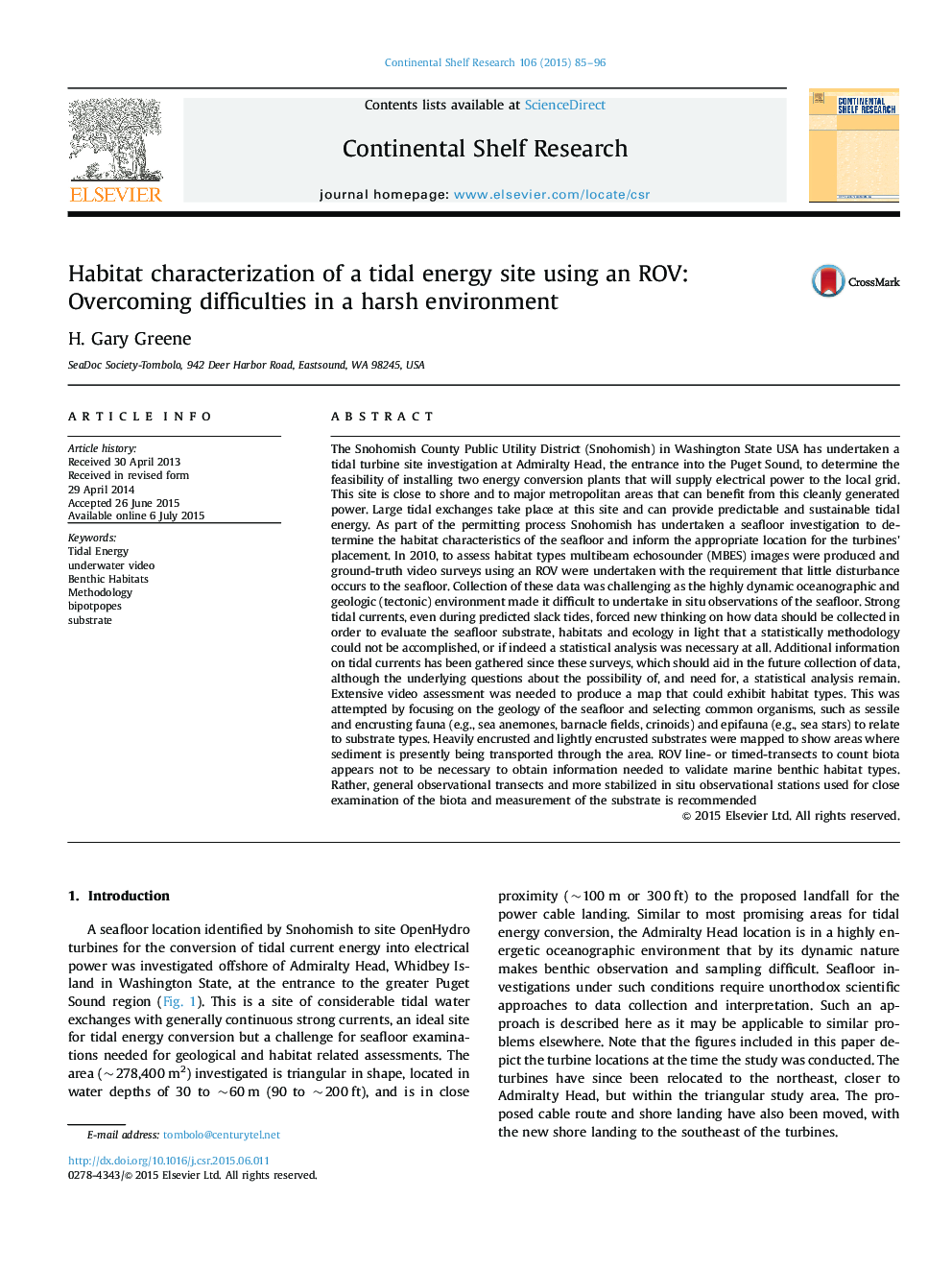| کد مقاله | کد نشریه | سال انتشار | مقاله انگلیسی | نسخه تمام متن |
|---|---|---|---|---|
| 4531668 | 1626106 | 2015 | 12 صفحه PDF | دانلود رایگان |

The Snohomish County Public Utility District (Snohomish) in Washington State USA has undertaken a tidal turbine site investigation at Admiralty Head, the entrance into the Puget Sound, to determine the feasibility of installing two energy conversion plants that will supply electrical power to the local grid. This site is close to shore and to major metropolitan areas that can benefit from this cleanly generated power. Large tidal exchanges take place at this site and can provide predictable and sustainable tidal energy. As part of the permitting process Snohomish has undertaken a seafloor investigation to determine the habitat characteristics of the seafloor and inform the appropriate location for the turbines' placement. In 2010, to assess habitat types multibeam echosounder (MBES) images were produced and ground-truth video surveys using an ROV were undertaken with the requirement that little disturbance occurs to the seafloor. Collection of these data was challenging as the highly dynamic oceanographic and geologic (tectonic) environment made it difficult to undertake in situ observations of the seafloor. Strong tidal currents, even during predicted slack tides, forced new thinking on how data should be collected in order to evaluate the seafloor substrate, habitats and ecology in light that a statistically methodology could not be accomplished, or if indeed a statistical analysis was necessary at all. Additional information on tidal currents has been gathered since these surveys, which should aid in the future collection of data, although the underlying questions about the possibility of, and need for, a statistical analysis remain. Extensive video assessment was needed to produce a map that could exhibit habitat types. This was attempted by focusing on the geology of the seafloor and selecting common organisms, such as sessile and encrusting fauna (e.g., sea anemones, barnacle fields, crinoids) and epifauna (e.g., sea stars) to relate to substrate types. Heavily encrusted and lightly encrusted substrates were mapped to show areas where sediment is presently being transported through the area. ROV line- or timed-transects to count biota appears not to be necessary to obtain information needed to validate marine benthic habitat types. Rather, general observational transects and more stabilized in situ observational stations used for close examination of the biota and measurement of the substrate is recommended
Journal: Continental Shelf Research - Volume 106, 1 September 2015, Pages 85–96